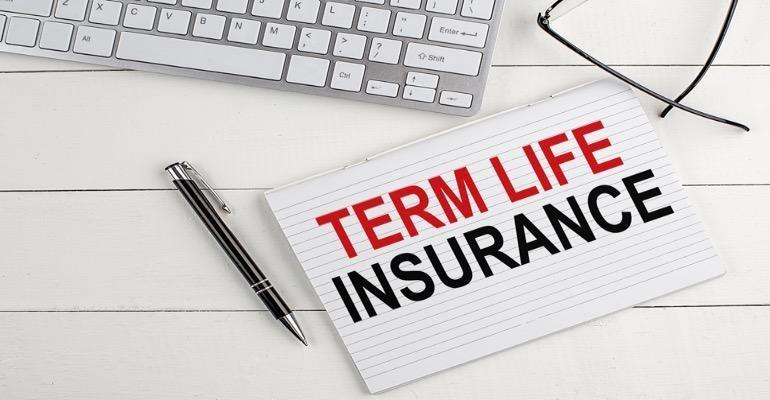Fixed-term life insurance is a simple and inexpensive way to provide your family with financial security in the event of death. Unlike other types of life insurance, term life insurance provides you with a specified period (period) during which the death benefit will be paid if you die. This detailed guide covers the basics of term life insurance, including the features, benefits, and things to consider so you can make an informed choice.
1. Definition and Purpose
When it comes to life insurance, term life insurance covers you for a set period, usually 10 to 30 years. It’s designed to protect you financially at a time in your life when you need it most, such as when you’re starting a family or paying off your mortgage. If the insured person dies during the term of the policy, the death benefit is paid to the beneficiary. This is the main purpose of term life insurance.
2. How Permanent Life Insurance Works
- Policy term: The person purchasing the policy chooses how long the service lasts. The terms are usually 10, 20, or 30 years, but can vary by the insurance company.
- Rates: Term life insurance rates are generally lower than permanent life insurance rates. The periodic payment a policyholder makes to maintain service is called a premium. The amount of the premium depends on factors such as the age of the insured, the state of health, and the amount of insurance.
- Death Benefit: If the policyholder dies during the term of the policy, the insurance company pays the death benefit to the beneficiary named on the policy. Beneficiaries can use this lump sum to pay for funeral expenses, replace lost income, pay bills, or meet other financial needs.
- No Cash Value: Term life insurance does not accumulate cash value over time like permanent life insurance. If the policyholder dies before the expiry of the term, the premium paid will not be refunded.
3. Benefits of Term Life Insurance
- Cost-effectiveness: Term life insurance is generally cheaper than permanent life insurance, making it a good option for those who want cost-effective coverage at certain times.
- Terms that can be changed: Policyholders can choose the terms that best suit their financial needs and objectives. As a result, people can tailor their insurance coverage to their needs, for example ensuring they are financially protected until their children can support themselves.
- Simple: Term life insurance is easy to understand and does not involve complex investments. This makes it easy to understand and compare different rules.
- Broad Coverage: Term life insurance policies generally cover more than permanent policies for the same monthly payment. Therefore, it is a good option for people who need many services at an affordable price.
4. Considerations and Drawbacks
- No accumulation of cash value: Because there is no cash value, the policyholder cannot recoup their premiums if they survive the time. Some people may consider this a disadvantage, especially if they want a policy that protects them while saving them money.
- Premiums increase with age: Term life insurance policies have lower initial premiums, but if you renew or purchase a new policy as you age, premiums can increase significantly. You need to consider how much it will cost you in the long run.
- Coverage Limits: Term life insurance only covers you for a certain period. If the person needs coverage for a longer period than the chosen term, they may need to purchase new coverage, which may be more expensive due to their age and any health conditions.
- No life insurance: Term life insurance does not provide life insurance like some permanent life insurance policies, such as cash payments or loans against the cash value of the policy. It only pays off when someone dies.
5. Who Should Consider Term Life Insurance?
- Find out what coverage you need: Make a list of your financial obligations, including your bills, future expenses, and the amount needed to replace your income. This test will help you determine how much mulch you need.
- Choose the right length: Choose terms that fit your financial goals. Consider how long it will take to pay off your house, when your children will be able to support themselves financially, and other important financial dates.
- Compare costs: Get quotes from multiple insurance companies to compare rates. Keep in mind that rates may change based on your age, health, and the amount of coverage you want. Choose a policy that meets your needs at a price you can afford.
- Check the insurance company’s reputation: Find out how well-known and financially stable the insurance company is. Find out what other customers are saying, what outside groups say about the company, and how often it delivers on its promises.
- Understand your policy’s renewal options: If you think you’ll need coverage after the initial term is up, learn about your insurance company’s renewal options. Please note that rates may increase when you renew your policy.
Conclusion
Term life insurance is a great way to protect your family financially if you have many responsibilities throughout your life. People can make an informed choice by understanding the features, benefits, and considerations of term life insurance. Whether you want to protect your young family’s future or meet short-term financial responsibilities, term life insurance is easy to understand, flexible, and affordable.
FAQs
1. What exactly is term life insurance?
A type of life insurance called ‘term’ covers you for a specific period or ‘period’. If the insured dies during this period, he or she will provide money to the person named as the beneficiary.
2. What is the difference between term life insurance and other types of life insurance?
Permanent life insurance builds cash value over time, but term life insurance only covers you for a set period. Its sole purpose is to pay out the death benefit within a certain period.
3. What’s the point of buying term life insurance?
The main reason people buy term life insurance is to provide financial security in the unfortunate event of the tragic death of a loved one. It is typically used to meet short-term financial needs, such as paying off debt or supporting a family.
4. How do you choose the policy term? what is it?
Policy conditions relate to the duration of coverage. Ten years, twenty years, and thirty years are common words. Choose a term that suits your financial goals and the time it takes to complete certain tasks, such as paying off your mortgage loan or paying your children’s school fees.
5. What is the payment process for term life insurance?
The premium is the monthly amount the policyholder pays to keep the policy in force. Their prices depend on factors such as your age, health, and the amount of coverage you need. Permanent life insurance generally costs more than term life insurance.
6. What happens if I outlive the policy term?
If you die before the end of the term, you will not receive a refund of the premiums you paid. You may be able to renew your policy, but your premiums may increase based on your age and health at the time of renewal.

